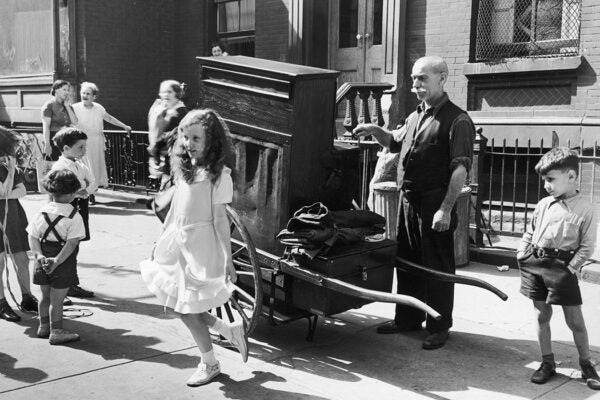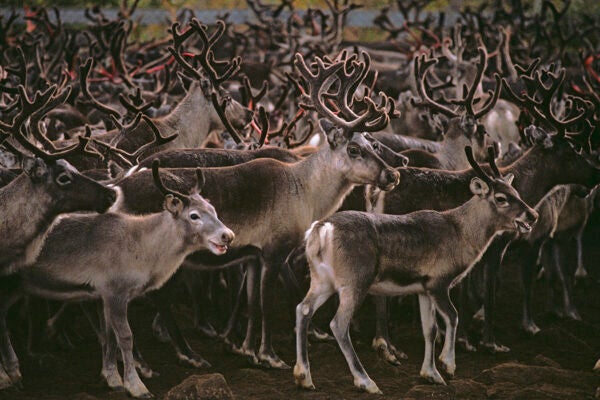Tropical forests and active volcanoes can give the impression to a first-time visitor that Tonga is an island nation dominated by elemental forces of nature. Yet this group of more than 170 islands is in fact one of the most conservative, and strictly hierarchical, communities in the Pacific region, home to the very last Polynesian monarchy.
First settled sometime between 1500 and 1000 BC, Tonga developed a formidable empire in the following centuries. Its success, as related by Shankar Aswani and Michael W. Graves in their 1998 article on the Tongan maritime expansion, was partly down to some rather Machiavellian strategies to gain power and influence.
“Tongan ruling elites encouraged younger collaterals to wage warfare on other islands,” they write,
and thus redirected their rivalry away from themselves and against other groups, while at the same time furthering territorial expansion through the incorporation (at varying levels) of independent chiefdoms. […] To extend the hegemonic control of the elites on [the main island of] Tongatapu over near and distant islands, Tongans took advantage of technological means to move large numbers of men and resources. Voyaging canoes and their navigators were key elements in both Tongan expansionist warfare and trade monopolies.
Tales of the early kings (Tuʻi Tonga, or “Lord of Tonga”) are still resonant on the islands today, as Aletta Biersack relates in her chapter, “Under the Tao Tree: The Genealogy of the Tongan Chiefs,” published in the edited volume Culture And History In The Pacific in 2021.
“According to legend,” writes Biersack,
the first Tuʻi Tonga is the son of the god ‘Eitumatupuʻa and an earth-mother named Vaʻepopua or ʻIlaheva. One day ʻEitumatupuʻa descends from the sky and impregnates Vaʻepopua; then he withdraws. The mother rears ʻAhoʻeitu alone, presumably surrounded by her own people. As ʻAhoʻeitu matures, he wishes to meet his father; and his mother tells him to climb a toa or casuarina (ironwood) tree to find him. Up in the sky, ʻAhoʻeitu finds not only his father but his older brothers, who, jealous of him, murder and eat him. When he cannot find ʻAhoʻeitu, ʻEitumatupuʻa suspects what has happened and orders his sons to vomit up the remains. He then revivifies ʻAhoʻeitu and names him the first Tuʻi Tonga, sending him back home to govern.
The wealth and prestige that the Tongan royalty enjoyed was manifested in their grandiose tombs, many of which can still be seen by visitors today. These stone vaults give little clue, however, to the less conventional customs that took place in the kingdom when the thorny issues of succession were involved.
Writing in their 1998 paper, “Stone architecture of the ancient Tongan state on Tongatapu Island, Kingdom of Tonga,” Geoffrey Clark and Phillip Parton describe the solution that Talaihaʻapepe, brother of Talatama, the 12th Tuʻi Tonga, came up with in the middle of the twelfth century CE when his sibling died, leaving no sons to succeed him. Talatama
installed a wooden “king” which is said to have been buried in Tamatou [in the village of Makaunga]. Excavation of the tomb by McKern supported this as he did not find a stone vault nor human remains, but one Lapaha tradition suggests instead that the wooden “king” was buried at Faletoonga at Talasiu and that Tamatou is a more recent construction.
The era of swearing allegiance to wooden kings ended with colonial intrusion upon the Tongan way of life, first by Dutch sailors, then by Captain James Cook, and, most influential of all, by Wesleyan missionaries who managed to convert the chief and his people to Christianity.
The subsequent ructions this caused are explained in the article “Tonga’s Tortured Venture in Church Unity,” written by Charles W. Forman in a 1978 issue of The Journal of Pacific History.
“[O]nly in Tonga do we find both full scale warfare between church groups and a nationally organized persecution and deportation of one church group by another,” Forman writes.
These two developments marked the reign of the Wesleyan king, George Tupou I [r. 1845–1893]. In his early days he fought to subdue his political opponents, the Ha’a Havea chiefs who had Roman Catholic connexions and French priests, and later in life he tried through persecution to rid the islands of the dissidents who would not follow him in the creation of a new national church.
Places of worship owned by both the Tongan Free Church and the Wesleyan Church of Tonga continue to sit, albeit now somewhat less uneasily, in close proximity to each other throughout the islands.
The transition from monarchy to democracy has been a painfully slow one in Tonga. Full independence came in 1970, freeing Tonga from its era as a British protectorate. Yet it was only in 2010 that King George Tupon V ended the feudal system by bringing in parliamentary democracy. He died just two years later, succeeded to the throne by his brother, the current monarch, George Tupou VI.
Helen Lee writes of these growing pains in her chapter, “The New Nobility: Tonga’s Young Traditional Leaders,” published in her 2019 edited volume, Pacific Youth: Local and Global Futures. As she points out, “there have been a growing number of scandals involving members of the nobility, from possession of firearms to allegations of involvement in drug running.” These disappointments have
led to increasingly strident criticisms of the traditional elite, publicly by academics, journalist, and pro-democracy activists, and more privately by many commoners who resent being called on by nobles for services and even money and who regard them as disconnected from their people.
However, ideas upholding the importance of respect and obedience to traditional authority are still deeply entrenched in Tonga. It is still the case that political change is “readily characterized in terms of tradition versus democracy” with many Tongans still unsure of how democracy can work alongside a royal family and the nobility.
Perhaps paradoxically, it’s Tonga’s fiercely traditional, monarchical culture that, along with the islands’ natural beauty, makes it a draw for travellers who have deep enough pockets to make the (invariably) long journey to the islands.
Weekly Newsletter
Ceremonies steeped in centuries of history are still extant today, with few more alluring than the royal kava ceremony, which was established by the monarchy as a way to assert their political power and influence in the kingdom. David Attenborough describes one such event in a 1966 issue of the Philosophical Transactions of the Royal Society of London (the difficult-to-find film version of this story aired as the sixth episode of Attenborough’s 1960 documentary series The People of Paradise; a 1998 film of a similar ceremony is easier to view).
“In essence,” he writes, “the proceedings consisted of an act of homage to the Queen by Vaea.” Everything had its order and place, starting with gifts, which were
brought in by Vaea’s people. Bark, cloth, mandioca, fish, chicken, roasted pigs and kava roots were all placed in the centre of the circle and counted so that all present could witness the munificence of the tribute. The Queen then took her place. The ceremony now became sacred, tapu.
One of the roast pigs was presented to the Queen and swiftly dismembered with a knife. Special parts were taken and given to specific noblemen. Some ate their share immediately whilst others were not permitted to do so, for reasons deriving from legendary history.
The largest kava root was then broken, pounded and mixed with water in the bowl. The men performing the task of mixing moved with slow hieratic movements of great deliberation. At a call from the organizing official, a girl took a coconut shell cup full of kava across the ring and presented it to the Queen. The Queen drank, then each nobleman was served in turn.
The divine rule of kings and queens may be giving way to democracy. But, just as the stirring of the royal kava root is done with deliberation, change in Tonga looks set to progress at an equally sedate rate.







